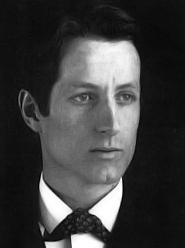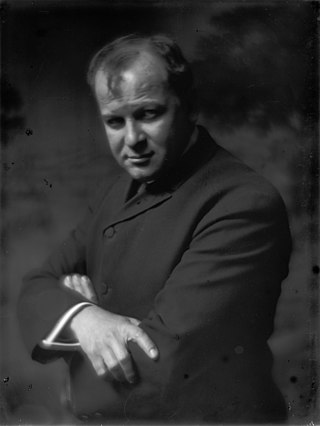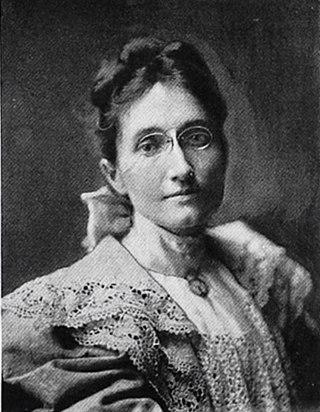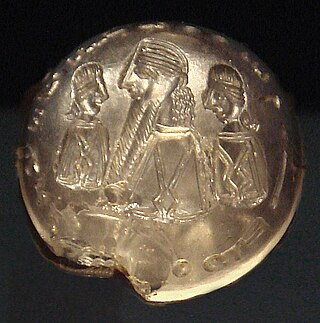
Pierre Bonnard was a French painter, illustrator and printmaker, known especially for the stylized decorative qualities of his paintings and his bold use of color. A founding member of the Post-Impressionist group of avant-garde painters Les Nabis, his early work was strongly influenced by the work of Paul Gauguin, as well as the prints of Hokusai and other Japanese artists. Bonnard was a leading figure in the transition from Impressionism to Modernism. He painted landscapes, urban scenes, portraits and intimate domestic scenes, where the backgrounds, colors and painting style usually took precedence over the subject.

Maxfield Parrish was an American painter and illustrator active in the first half of the 20th century. He is known for his distinctive saturated hues and idealized neo-classical imagery. His career spanned more than sixty years and was wildly successful: the National Museum of American Illustration deemed his painting Daybreak (1922) to be the most successful art print of the 20th century.

George Benjamin Luks was an American artist, identified with the aggressively realistic Ashcan School of American painting.

John La Farge was an American artist whose career spanned illustration, murals, interior design, painting, and popular books on his Asian travels and other art-related topics. La Farge made stained glass windows, mainly for churches on the American east coast, beginning with a large commission for Henry Hobson Richardson's Trinity Church in Boston in 1878, and continuing for thirty years. La Farge designed stained glass as an artist, as a specialist in color, and as a technical innovator, holding a patent granted in 1880 for superimposing panes of glass. That patent would be key in his dispute with contemporary and rival Louis Comfort Tiffany.

Adolph Friedrich Reinhardt was an abstract painter and Art theorist active in New York City for more than three decades. As a theorist he wrote and lectured extensively on art and was a major influence on conceptual art, minimal art and monochrome painting.

Clarence Coles Phillips was an American artist and illustrator who signed his early works C. Coles Phillips, but after 1911 worked under the abbreviated name, Coles Phillips. He is known for his stylish images of women and a signature use of negative space in the paintings he created for advertisements and the covers of popular magazines.

Robert Frederick Blum was an American artist. He was one of the youngest members of the National Academy of Design and was President of the Painters in Pastel and a member of the Society of American Artists and the American Watercolor Society.

Everett Shinn was an American painter and member of the urban realist Ashcan School.

Frederick Stuart Church (1842–1924) was an American artist, working mainly as an illustrator and especially known for his depiction of animals.

Frederick Judd Waugh was an American artist, primarily known as a marine artist. During World War I, he designed ship camouflage for the U.S. Navy, under the direction of Everett L. Warner.
Clara Elsene Peck was an American illustrator and painter known for her illustrations of women and children in the early 20th century. Peck received her arts education from the Minneapolis School of Fine Arts and was employed as a magazine illustrator from 1906 to 1940. Peck's body of work encompasses a wide range, from popular women's magazines and children's books, works of fiction, commercial art for products like Ivory soap, and comic books and watercolor painting later in her career. Peck worked during the "Golden Age of American Illustration" (1880s–1930s) contemporaneous with noted female illustrators Jessie Willcox Smith, Elizabeth Shippen Green and Violet Oakley.

Alice Barber Stephens was an American painter and engraver, best remembered for her illustrations. Her work regularly appeared in magazines such as Scribner's Monthly, Harper's Weekly, and The Ladies Home Journal.
Philip R. Goodwin was an American painter and illustrator who specialized in depictions of wildlife, the outdoors, fishing, hunting and the Old American West. He provided illustrations for numerous books and magazines, as well as for commercial items, such as posters, advertisements and calendars. He is perhaps best known for illustrating Jack London's The Call of the Wild and for providing the cover art for many issues of Outdoor Recreation / Outdoor Life Magazine during the 1920s and early 1930s. He is also the artist who designed the Horse & Rider Trademark of the Winchester Repeating Arms Company. Goodwin was a very private person and did not seek publicity, so not much was known about his private life during his lifetime. Most of what is known comes from letters held at the Buffalo Bill Historical Center.
William Robinson Leigh was an American artist and illustrator, who was known for his painted Western scenes.

The depiction of night in paintings is common in art in Asia. Paintings that feature the night scene as the theme are mostly portraits and landscapes. Some artworks which involve religious or fantasy topics use the quality of dim night light to create mysterious atmospheres. They tend to illustrate the illuminating effect of the light reflection on the subjects under either moonlight or artificial light sources.

Fernand Lungren (1857–1932) was an American painter and illustrator. He is mostly known for his paintings of American South Western landscapes and scenes as well as for his earlier New York and European city street scenes.
Sidney Harry Riesenberg was an illustrator and artist who lived in Yonkers, New York. He was known as a professional illustrator for his posters for the United States Marine Corps and the Liberty bond programs, for his illustrations for book covers, magazines, and for oil paintings of diverse subjects. He retired from his professional work and dedicated his full-time energy to painting fine arts and teaching. In 1937 he began spending summers in Rockport, Massachusetts, where he painted scenes of the small fishing town. He was active in the Rockport Art Association, teaching oil painting and participating in water color figure painting classes.
Elizabeth Fearne Bonsall was an American painter and illustrator. She illustrated The Book of Cats (1903), The Book of Dogs, The Pied Piper of Hamelin (1927), and other books. She created illustrations for Henry Christopher McCook's American Spiders and their Spinningwork. McCook credits her for making most of the illustrations for the volume. Bonsall also created illustrations for magazines. She won several awards for her works between 1885 and 1897.

The Annunciation is an oil painting by the Early Netherlandish painter Hans Memling. It depicts the Annunciation, the archangel Gabriel's announcement to the Virgin Mary that she would conceive and become the mother of Jesus, described in the Gospel of Luke. The painting was executed in the 1480s and was transferred to canvas from its original oak panel sometime after 1928; it is today held in the Robert Lehman collection of the Metropolitan Museum of Art in New York.

Manichaeism has a rich tradition of visual art, starting with Mani himself writing the Book of Pictures.















